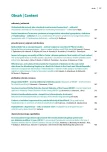Rare combination of Turner syndrome and congenital adrenal hyperplasia with 21-hydroxylase deficiency: case report
Authors:
Ivana Ságová 1; Matej Stančík 1; Dušan Pávai 2; Daniela Kantárová 1; Anton Vaňuga 3; Peter Vaňuga 2
Authors‘ workplace:
I. interná klinika JLF UK a UNM, Martin, Slovenská republika
1; Endokrinologické oddelenie Národného endokrinologického a diabetologického ústavu Ľubochňa, Slovenská republika
2; Alpha Medical, s. r. o., Slovenská republika
3
Published in:
Vnitř Lék 2018; 64(4): 432-436
Category:
Case Reports
Overview
Combination of Turner syndrome (TS) and classic congenital adrenal hyperplasia (CAH) is rare. Globally, the incidence of CAH, autosomal recessive disorder caused by enzyme defect of steroidogenic pathway, is very low (1 : 10 000–16 000). 90 % of CAH cases are caused by 21-hydroxylase gene mutation (CYP21A2). Globally, the incidencie of Turner syndrome reaches 1 : 2 500. Phenotypically, females with TS may render wide spectrum of clinical features. Dominant symptoms are lowered terminal height and gonadal dysgenesia, ultimately leading to absence of puberty and infertility. Virilisation may be evident among TS women with chromosome Y 45, X/46, XY. We present a 57 year old woman suffering from both TS 45, X/46, XX and 21-hydroxylase deficiency. Based on the intersex, she was misdiagnosed as a male after the birth. Dominant signs were intrauterine growth retardation and Prader 5 virilisation of the external genitalia. Testes were not palpable. Laparoscopy at the age of 6 showed uterus and ovaries. After this examination, clitoroplasty and vaginoplasty was performed. Karyotyping revealed a 45, X/46, XX pattern. The presence of virilising features at the time of puberty however could not be explained with the diagnosis of Turner syndrome. Laboratory tests revealed elevated level of 17-hydroxyprogesterone, dehydroepiandrosterone with low cortisol concentration and elevated ACTH. With the genomic analysis CYP21A2 gene, namely IN2G (IVS 2–13 A/C>G), large deletion/conversion was detected. Glucocorticoid treatment was initiated. Due to increased plasma renin concentration, fludrocortisone therapy was also initiated. Within this therapy, patient´s state improved significantly.
Key words:
congenital adrenal hyperplasia – CYP21A2 – Turner syndrome – 21-hydroxylase deficiency
Sources
1. Zapletalová J, Šnajderová M, Lebl J. Turnerův syndrom v dětství a v adolescenci – současné možnosti léčby. Remedia 2012; 22(3): 199–205.
2. Bondy CA, Bakalov VK. Investigation of cardiac status and bone mineral density in Turner syndrome. GrowthHorm IGF Res 2006; 16(Suppl A): S103-S108. Dostupné z DOI: <http://dx.doi.org/10.1016/j.ghir.2006.03.008>.
3. Zapletalová J, Lebl J. Klinická symptomatologie Turnerova syndromu. In: Turnerův syndrom. Galén: Praha 2003 : 68–109. ISBN 80–7262–204–8.
4. Gungor N, Böke B, Belgin E et al. High frequency hearing loss in Ullrich-Turner syndrome. Eur J Pediatr 2000; 159(10): 740–744.
5. Gravholt CH. Clinical practice in Turner syndrome. Nat Clin Pract Endocrinol Metab 2005; 1(1): 41–52. Dostupné z DOI: <http://dx.doi.org/10.1038/ncpendmet0024>.
6. Speiser PW, Azzis R, Baskin LS et al. Congenital adrenal hyperplasia due to steroid 21-hydroxylase deficiency: an endocrine Society clinical practice guideline. J Clin Endocrinol Metab 2010; 95(9): 4133–4160. Dostupné z DOI: <http://dx.doi.org/10.1210/jc.2009–2631>. Erratum in J Clin Endocrinol Metab 2010; 95(11): 5137.
7. Al-Agha A, Ocheltree A, Al-Tamimi M. Association between genotype, clinical presentation, and severity of congenital adrenal hyperplasia: a review. Turk J Pediatr 2012; 54(4): 323–332.
8. Kriplani A, Lunkad A, Agarwal N et al. A Success Story in Congenital Adrenal Hyperplasia. J Obstet Gynaecol India 2012; 62(Suppl 1): S78-S80. Dostupné z DOI: <http://dx.doi.org/10.1007/s13224–013–0387–1>.
9. Koh JW, Kim GH, Yoo HW et al. Clinical Features of Congenital Adrenal Insufficiency Including Growth Patterns and Significance of ACTH Stimulation Test. J Korean Med Sci 2013; 28(11): 1650–1656. Dostupné z DOI: <http://dx.doi.org/10.3346/jkms.2013.28.11.1650>.
10. Chovancová D. Novorodenecký skríning na Slovensku. Pediatria pre prax 2007; 8(1): 13–16.
11. Hjerrild BE, Mortensen KH, Gravholt CH. Turner syndrome and clinical treatment. Br Med Bull 2008; 86(1): 77–93. Dostupné z DOI: <http://dx.doi.org/10.1093/bmb/ldn015>.
12. Gravholt CH, Lauridsen AL, Brixen K et al. Marked dysproportionality in bone size and mineral, and distinct abnormalities in bone markers and calcitropic hormones in adult Turner syndrome: a cross-sectional study. J Clin Endocrinol Metab 2002; 87(6): 2798–2808. Dostupné z DOI: <http://dx.doi.org/10.1210/jcem.87.6.8598>.
13. Lee KF, Chan OK, A, Fok J et al. Late presentation of simple virilising 21-hydroxylase deficiency in a Chinese woman with Turner’s syndrome. Hong Kong Med J 2013; 19(3): 268–271. Dostupné z DOI: <http://dx.doi.org/10.12809/hkmj133717>.
14. New MI. [International Workshop on Management of Puberty for Optimum Auxological Results]. Factors determining final height in congenital adrenal hyperplasia. J Pediatr Endocrinol Metab 2001; 14(Suppl 2): S933-S937.
15. Merke DP, Bornstein SR, Avila NA et al. NIH conference. Future directions in the study and management of congenital adrenal hyperplasia due to 21-hydroxylase deficiency. Ann Intern Med 2002; 136(4): 320–334.
16. Modi DN, Sane S, Bhartiya D. Accelerates germ cell apoptosis in sex chromosome aneuploid fetal human gonads. Mol Hum Reprod 2003; 9(4): 219–225.
17. Sybert VP. Turner syndrome. In: Cassidy SB, Allanson JE (eds). Management of genetic syndromes. New York: Wiley-Liss, 2001:
18. 459–484.
19. Sybert VP. Phenotypic effects of a mosaicism for a 47,XXX cell line in Turner syndrome. J Med Genet 2002; 39(3): 217–220.
20. Hagenfeldt K, Janson PO, Holmdahl G et al. Fertility and pregnancy outcome in women with congenital adrenal hyperplasia due to 21-hydroxylase deficiency. Hum Reprod 2008; 23(7): 1607–1613. Dostupné z DOI: <http://dx.doi.org/10.1093/humrep/den118>.
Labels
Anaesthesiology, Resuscitation and Inten Angiology Clinical biochemistry Paediatric gastroenterology Paediatric cardiology Paediatric nephrology Paediatric neurology Paediatric clinical oncology Paediatric pneumology Paediatric rheumatology Diabetology Endocrinology Pharmacy Clinical pharmacology Gastroenterology and hepatology Geriatrics Haematology Hygiene and epidemiology Medical virology Intensive Care Medicine Internal medicine Cardiology Nephrology Neurology Obesitology Clinical oncology Anatomical pathology Pneumology and ftiseology Medical assessment Occupational medicine General practitioner for children and adolescents General practitioner for adults Radiotherapy Rheumatology Nurse Sexuology Forensic medical examiner Toxicology Trauma surgery Home nurse Medical studentArticle was published in
Internal Medicine

2018 Issue 4
Most read in this issue
- Diagnosis of MODY – brief overview for clinical practice
- Cyclic Cushing’s syndrome: a case study and overview
- Virilization as demonstration of hypertestosteronism by ovarian tumor: case report
- Rare combination of Turner syndrome and congenital adrenal hyperplasia with 21-hydroxylase deficiency: case report
